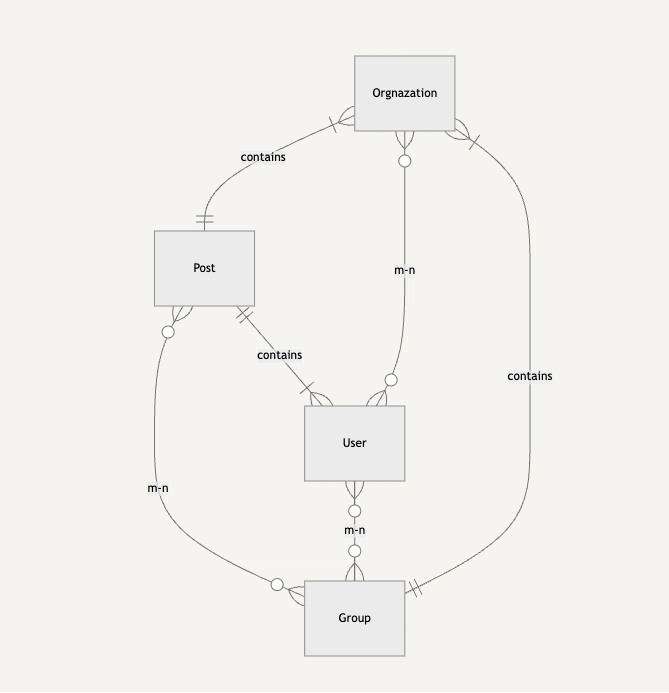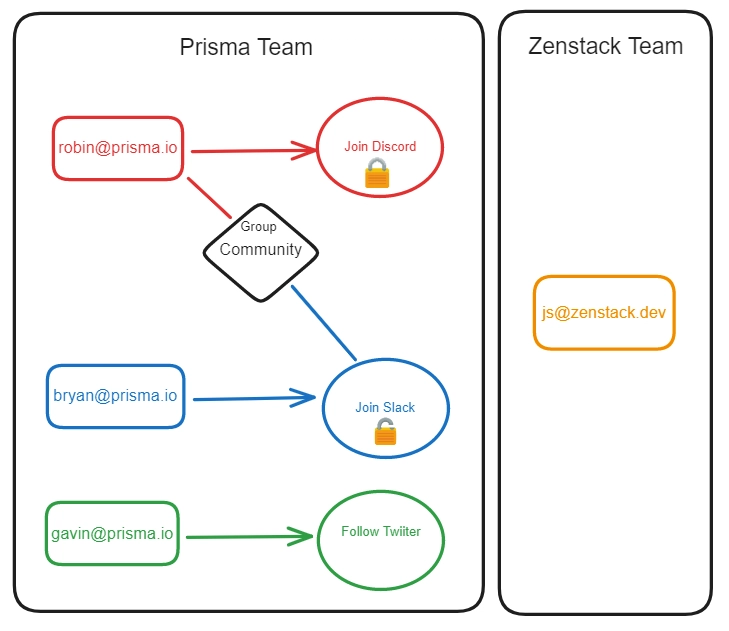It’s hard to build a scalable SaaS system
Having been involved in the development of four commercial SaaS products at my previous company, I've come to realize the multitude of complexities that arise compared to typical consumer products. Among these complexities, one prominent area lies in the intricate realm of permission control and access policies.
In addition to individual user permissions, there is also a need to manage permissions at the organizational level, not to mention the crucial aspect of tenant isolation that goes unnoticed by users. Regardless of whether you opt for RBAC or ABAC access control mechanisms, the system's complexity increases alongside its functionality. Consequently, the time required to add new features gradually slows down, akin to the declining trend depicted by the blue line in Martin Fowler’s Design Stamina Hypothesis:
Time is not the worst thing, as I've witnessed instances where adding new features can break existing ones. This becomes particularly problematic in the B2B SaaS realm, where such issues can have fatal consequences.
Access control code is scattered
One prominent factor contributing to this challenge is the scattered nature of access control handling within the code base. Some access control logic is centralized in specific components, such as middleware or the database's RLS (Row-Level Security), while others are implemented within individual components. As a result, even seemingly simple changes require a deep understanding of the entire codebase and its intricacies.
Not only must developers be careful not to inadvertently break existing functionality, but they must also identify the optimal location to implement changes without introducing potential issues down the line.
What if there is a way to consolidate all access control logic in one centralized location?
Single Source of Truth
Here comes the ZenStack: a Typescirpt toolkit builds on top of Prisma ORM. It uses the declarative data model on top of Prisma, adding access policy and validation rules, from which it will automatically generate RESTful or tRPC API for you.
SaaS project using ZenStack
Here is the SaaS backend project you can start with:
https://github.com/zenstackhq/saas-backend-template
Features
- Multi-tenant
- Soft delete
- Sharing by group
Data Model
In schema.zmodel, there are 4 models, and their relationships are as below:

- Organization is the top-level tenant. Any instance of User, post, and group belong to an organization.
- One user could belong to multiple organizations and groups
- One post belongs to a user and could belong to multiple groups.
Permissions
Let’s take a look at all the permissions of the Post and how they could be expressed using ZenStack’s access policies.
💡 You can find the detailed reference of access policies syntax below:
https://zenstack.dev/docs/reference/zmodel-language#access-policy
- Create
the owner must be set to the current user, and the organization must be set to one that the current user belongs to.
@@allow('create', owner == auth() && org.members?[id == auth().id])
-
Update
only the owner can update it and is not allowed to change the organization or owner
@@allow('update', owner == auth() && org.future().members?[id == auth().id] && future().owner == owner) -
Read
-
allow the owner to read
@@allow('read', owner == auth()) -
allow the member of the organization to read it if it’s public
@@allow('read', isPublic && org.members?[id == auth().id]) -
allow the group members to read it
@@allow('read', groups?[users?[id == auth().id]])
-
-
Delete
- don’t allow delete The operation is not allowed by default if no rule is specified for it.
-
The record is treated as deleted if
isDeletedis true, aka soft delete.
@@deny('all', isDeleted == true)
You can see the complete data model together with the above access policies in schema.zmodel:
abstract model organizationBaseEntity {
id String @id @default(uuid())
createdAt DateTime @default(now())
updatedAt DateTime @updatedAt
isDeleted Boolean @default(false) @omit
isPublic Boolean @default(false)
owner User @relation(fields: [ownerId], references: [id], onDelete: Cascade)
ownerId String
org Organization @relation(fields: [orgId], references: [id], onDelete: Cascade)
orgId String
groups Group[]
// when create, owner must be set to current user, and user must be in the organization
@@allow('create', owner == auth() && org.members?[id == auth().id])
// only the owner can update it and is not allowed to change the owner
@@allow('update', owner == auth() && org.members?[id == auth().id] && future().owner == owner)
// allow owner to read
@@allow('read', owner == auth())
// allow shared group members to read it
@@allow('read', groups?[users?[id == auth().id]])
// allow organization to access if public
@@allow('read', isPublic && org.members?[id == auth().id])
// can not be read if deleted
@@deny('all', isDeleted == true)
}
model Post extends organizationBaseEntity {
title String
content String
}
Model Inheritance
You may be curious about why these rules are defined within the abstract organizationBaseEntity model rather than the specific Post model. That’s why I say it is Scalable. With ZenStack's model inheritance capability, all common permissions can be conveniently handled within the abstract base model.
Consider the scenario where a newly hired developer needs to add a new ToDo model. He can effortlessly achieve this by simply extending the organizationBaseEntity :
model ToDo extends organizationBaseEntity {
name String
isCompleted Boolean @default(false)
}
All the multi-tenant, soft delete and sharing features will just work automatically. Additionally, if any specialized access control logic is required for ToDo, such as allowing shared individuals to update it, you can effortlessly add the corresponding policy rule within the ToDo model without concerns about breaking existing functionality:
@@allow('update', groups?[users?[id == auth().id]] )
How much NodeJS code do I need to write
So you already have the schema as the single source of the truth for your business model and your access control. You probably expect to see the Typescript/Javascript code you need to write next. Here is the exciting part:
That’s all. You'll hardly need to write any TS/JS code at all. ZenStack automatically generates API for you with access control seamlessly injected at runtime.
While you may observe several lines of code in index.ts, it is primarily for installing the automatically generated RESTful APIs into Express.js and starting the application.
💡 It supports the majority of Node.js frameworks like Next.js, Sveletkit, Fastify, etc.
Let’s play around
I created sample data for you to play around with. You can run the below command to seed it:
npm run seed
The data is like below:
So in the Prisma team, each user created a post:
- Join Discord is not shared, so it could only be seen by Robin
- Join Slack is shared in the group to which Robin belongs so that it can be seen by both Robin and Bryan.
- Follow Twitter is a public one so that it could be seen by Robin, Bryan, and Gavin
You could simply call the Post endpoint to see the result simulate different users:
curl -H "X-USER-ID: robin@prisma.io" localhost:3000/api/post
💡 It uses the plain text of the user id just for test convenience. In the real world, you should use a more secure way to pass IDs like JWT tokens.
Based on the sample data, each user should see a different count of posts from 0 to 3.
Soft Delete
Since it’s soft delete, the actual operation is to update isDeleted to true. Let’s delete the “Join Salck” post of Robin by running below:
curl -X PUT \
-H "X-USER-ID: robin@prisma.io" -H "Content-Type: application/json" \
-d '{"data":{ "type":"post", "attributes":{ "isDeleted": true } } }'\
localhost:3000/api/post/slack
After that, if you try to access the Post endpoint again, the result won’t contain the “Join Slack” post anymore. If you are interested in how it works under the hook, check out another post for it:


Soft delete: Implementation issues in Prisma and solution in ZenStack
JS for ZenStack ・ Feb 19 '23
Last
The SaaS product MermaidChart has recently launched its Teams feature powered by ZenStack. If you want to know about their experience of adopting ZenStack, you are welcome to join our Discord. For other information and examples, check out our official website.
Can you help me out?
If you feel like ZenStack could help you, I would be super happy if you could give me a star so it could really help more people to move fast! ❤️







Top comments (3)
Nice one!
Thanks!
666